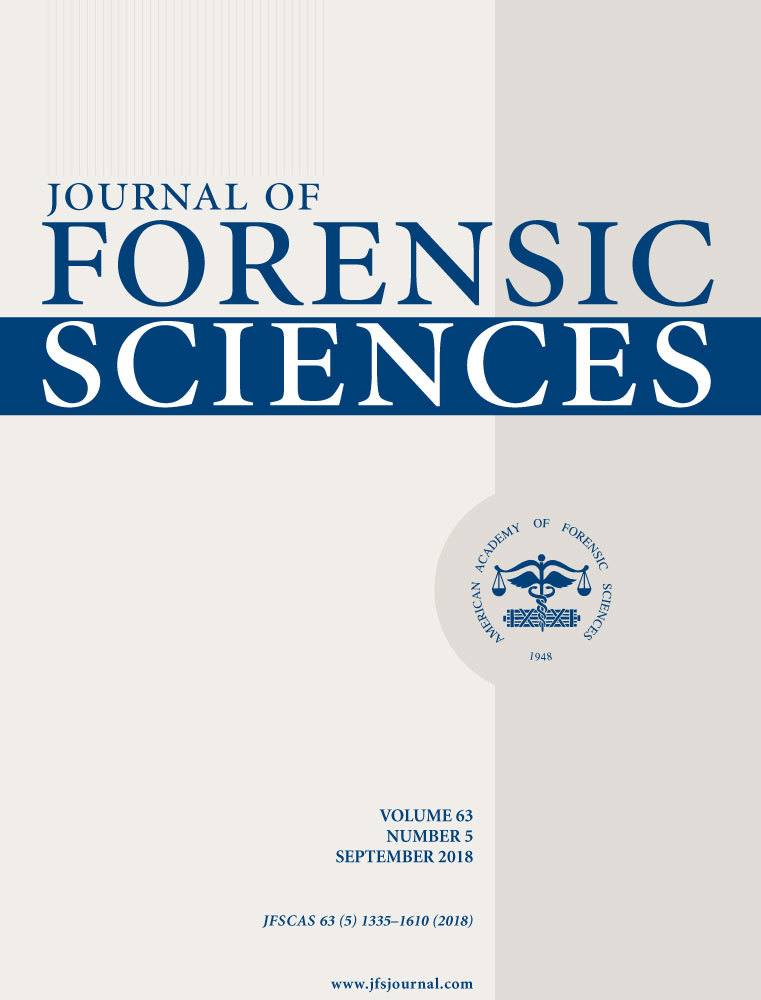Testing the Use of Pigs as Human Proxies in Decomposition Studies†
Abstract
Pigs are a common human analogue in taphonomic study, yet data comparing the trajectory of decomposition between the two groups are lacking. This study compared decomposition rate and gross tissue change in 17 pigs and 22 human remains placed in the Forensic Investigation Research Station in western Colorado between 2012 and 2015. Accumulated degree days (ADD) were used to assess the number of thermal units required to reach a given total body score (TBS) (1) which was used as the measure of decomposition. A comparison of slopes in linear mixed effects model indicated that decomposition rates significantly differed between human donors and pig remains χ2(1) = 5.662, p = 0.017. Neither the pig nor the human trajectory compared well to the TBS model. Thus, (i) pigs are not an adequate proxy for human decomposition studies, and (ii) in the semiarid environment of western Colorado, there is a need to develop a regional decomposition model.




